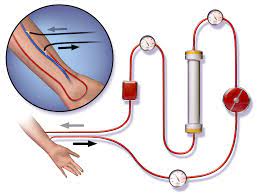Ayurvedic Tips for Diabetes Management:
Diabetes is a well-known disease that affects more than 10% of adults worldwide. Madhumeh, also known in Sanskrit or Ayurvedic terminology as diabetes, can cause problems for many reasons. It can have a significant impact on the choices one makes when it comes to eating, and spikes can also trigger other well-being concerns in glucose. Diabetes is also known to significantly impact visual health, cardiovascular well-being, sensory system, feet, and kidney function.
The good news is that there are numerous suggestions and strategies that can be used to manage the condition.
Definitions of diabetes in Ayurveda
Let’s look at what diabetes means in Ayurveda before discussing how it is treated in that system of medicine.
Ayurveda refers to diabetes as a condition that causes urinary problems. There are 20 types of diabetes. Twenty different types of diabetes exist. The most popular form of diabetes is called diabetes mellitus.
Ayurvedic treatments for diabetes include Panchakarma therapy, herbal remedies, and its various cycles (Vamana Virechana Vasti and others). The severity of the patient’s condition will determine the type of treatment that is chosen.
It is important to note that these treatments are expected to increase insulin awareness of type-4 glucose receptors, and this results in insulin resistance being reduced and beta cell recovery enhanced.
By looking at these details, you can find the most affordable prices.
Ayurvedic treatments for diabetes
Homemade Medicine
As mentioned above, a few spices may help with diabetes management. This segment will provide a list of Ayurvedic spices for diabetes, which may help manage glucose levels.
It could also help manage diabetes.
- Cinnamon
- Fenugreek
- Psyllium
- Karela is a disgusting gourd
- Milk thorn
- Aloe vera
- Pleasant melon
- Ginseng
Many organic and spice products on this list have a strong taste, and this property is believed to help with sugar levels.
Panchakarma Therapy
Panchakarma, one of the most comprehensive Ayurvedic treatments, is designed to help with various well-being issues and increase general prosperity. The body will be detoxified by five more cycles of subdued therapy.
The entire Panchakarma therapy can take seven to fifteen days, depending on which cycle the Ayurvedic specialist selects.
Yoga for diabetics
This is due in part to the fact that yoga helps people be more aware of the causes of diabetes. Diabetes can be caused by stress and weight loss. Regular yoga with reflection reduces stress and helps to lower body fat accumulation. Pranayam and Surya Namaskar are the most effective poses.
Shabnam Ayurveda offers ayurvedic treatment for diabetes.
Our PCPs endorse modified Kerala therapies, regular yoga and other activities, a low-starch diet, and low anxiety in daily life that help maintain normal blood glucose levels.
Ayurvedic diabetes treatment can reduce blood glucose levels by making dietary changes. Ayurvedic diabetes treatment includes dietary recommendations. Foods should not be too astringent. The diet should include severe gourd, moong, and grains.
Natural foods should dominate a diet high in fiber.
- You should use flavors like cumin, turmeric, coriander, and cardamom.
- You can eat five to six small meals instead of three heavy feasts to avoid glucose spikes.
- Ayurvedic treatments for Type II diabetes use locally produced remedies that can regulate blood sugar levels. Here are some of the most well-known spices that are used in Ayurvedic diabetes treatments:
- Gymnema, also referred to as gurmar, is one of the most well-known herbal remedies for treating diabetes. It can “destroy” sugar by decreasing the desire to eat sweets.
- High fiber content in Methi (or fenugreek) seeds aids blood sugar regulation.
- Jamun, a natural product that helps lower blood sugar levels, is a good option. This is one of the most potent medications in Ayurveda.
- The body’s insulin sensitivity can be increased by two other common spices, neem (also known as tulsi) and tulsi (also known as tulsi).
- Giloy, also known as Guduchi, is another exceptional spice that helps regulate glucose levels and increases general resistance.
You can reverse this metabolic problem by using tried-and-true old-fashioned recipes as well as restrictive ones. Shabnam Ayurveda offers an accurate ayurvedic approach for managing and managing diabetes.
What food items are suitable for diabetics?
Certain organic versions of certain vegetables should be consumed by diabetics, including citrus fruits and vegetables such as carrots, cabbage, spinach, onions, and garlic. You can control your blood sugar by eating whole grains, chickpeas, and all-natural dietary supplements like fenugreek and neem, green and yellow tea, whole grains, and young grains. Shabnam Ayurveda is always looking for you to consult specialists and find the best Ayurvedic treatment for diabetes.



